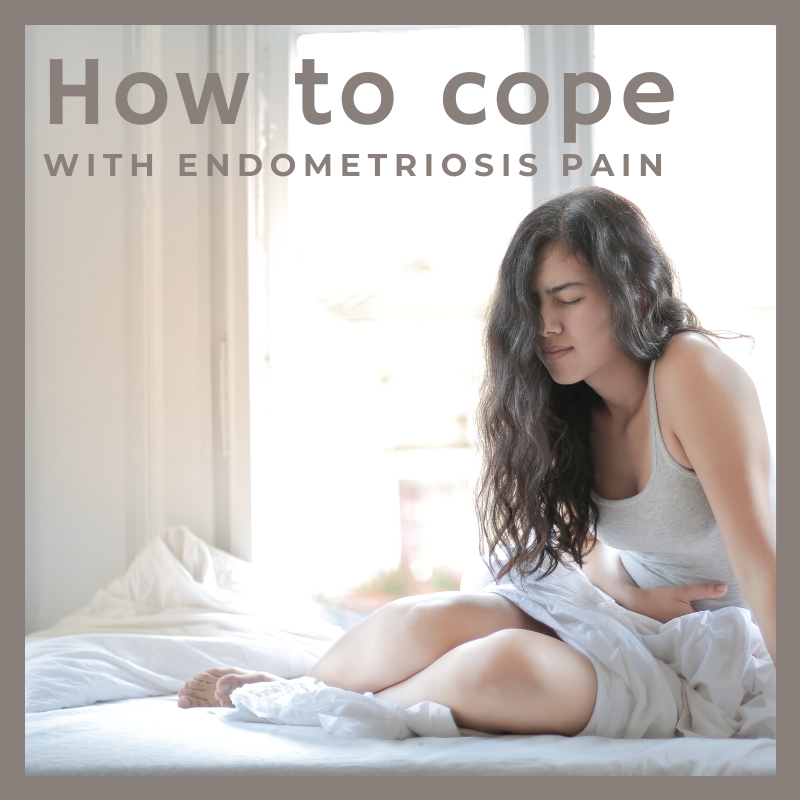
Dealing with Endometriosis pain

If you have clicked on this article maybe it is because you or a loved one already knows all too well the horrific reality of the pain Endometriosis can bring, just in case you aren't sure, here are the basics first.
Feel free to skip down a little to see some alternative pain management techniques if you already know about the condition.
What is Endometriosis?
Women the world over know the pain a period can bring, sometimes debilitating. When painful medical cycles are linked to a recognised medical condition (pathology) this is referred to as secondary dysmenorrhea. The most common cause is Endometriosis. 1 in 10 women
According to the Endometriosis Ireland:
"Endometriosis is a common chronic (long-term) inflammatory condition where tissue, similar to the tissue that normally grows inside the uterus, grows outside of the uterus. The most common places where endometriosis occurs are the ovaries, the fallopian tubes, the bowel, and the areas in front, on the back, and to the sides of the uterus. It can also be found on the bladder and bowel. In some cases, it is found outside the pelvis (lung, skin, brain, diaphragm)."
This inflammatory response results in pain and adhesions, which develop when scar tissue causes internal structures or organs to fuse together. The pain and other symptoms experienced can fluctuate with the menstrual cycle according to hormone levels.
What does it feel like?
Symptoms may be worse at certain times in the cycle, with ovulation, prior to menstruation and during the period being the most severe for many women. While some women with endometriosis experience severe pelvic pain, others have no symptoms at all or regard their symptoms as simply being period pain/cramps.
Common symptoms include:
- Pelvic pain - typically much more severe than 'period pain' and can increase over time
- Painful periods - Often starting before menstruation and even continuing afterward.
- Other abdominal pain - Lower back, abdominal pain
- Excessive bleeding - Don't ignore unusually heavy periods which continue over time
- Infertility - Endometriosis is one of the leading causes of infertility, however, it is estimated that 60 – 70% of women with endometriosis will conceive, this may increase with the removal of endometriosis and the use of assisted reproductive techniques.
- Other: Fatigue, diarrhoea, constipation, bloating, nausea.
What can I do to help the pain?
Aside from any pain relief medication you may be offered by your doctor, there are other pain management techniques you can apply at home.

- Use a wraparound heating pad - target pain all around the abdomen, lower back and pelvic area with a hands free fully wraparound pack like HUG. Heat helps to relax pelvic muscles and reduce cramping according to the Mayo Clinic. Be careful to avoid burns and keep the heat sustained at a low level. Low level heat therapy has been proven to be more effective than Ibuprofen and acetaminophen for low back pain for example.
- Try a hot bath - not only is the heat effective, but it's all over your body and a bath will give you a chance to relax.
- Try seeing a pelvic floor therapist - High tone in the pelvic floor is not well understood by Doctors and a common source of discomfort as it is a self-defence mechanism of your body in response to the Endometriosis. Pelvic floor therapy can help to relax muscles, providing some relief from pain.
- Consider giving Yoga a go - According to the National Centre for Complementary and Integrative Health, Yoga appears to be effective for reducing low-back pain. As this is a similar symptom you may find it can help you. From anecdotal evidence, pigeon pose, downward dog and other poses involving inversions and twists seem to be helpful.
- Travel with your heat or have an option at the office - an option like HUG is a great discreet pack to wear while working or shopping, without having to stay plugged into a power socket at home, and environmentally friendly too as you can use it over and over again hot or cold.
What treatments are available?
There is no cure for endometriosis, but there are several treatment and management options.
For some people, treatments like laparoscopic surgery to remove endometriosis lesions and hormonal medications help to resolve some of the pain. But it is not uncommon to have significant residual pain that is either incompletely or barely reduced by the standard anti-inflammatory drugs which many women would first reach for to alleviate symptoms.
The best treatment depends on your individual situation. Speak to your doctor, and most importantly if you feel you are not being heard, be your own advocate. Contact a local support group or Facebook group for advice and help in your area if you feel you are not getting it from your medical professionals.
Sending love and hugs your way xx.
